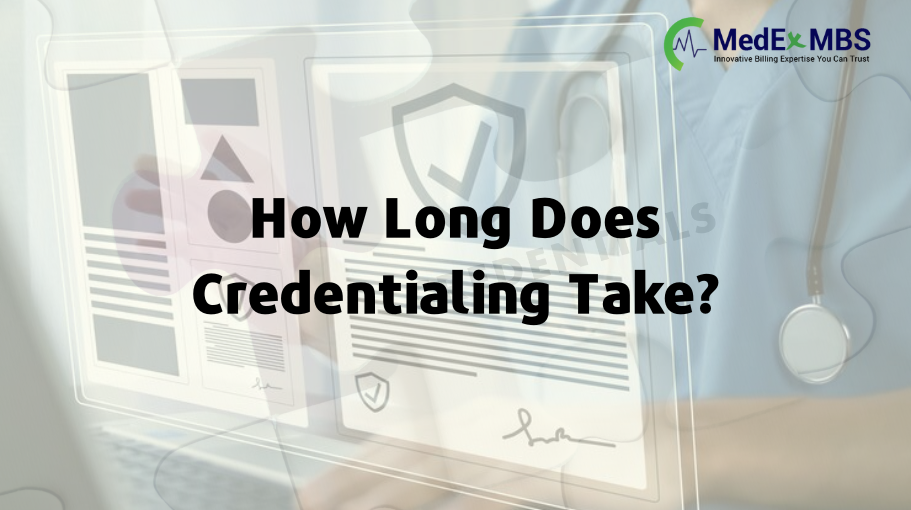Frequent HCPCS Coding Errors in Radiology Billing and Strategies to Prevent Them

Radiology practices frequently neglect to apply separate charges for essential items, including imaging supplies, contrast dye, and radioactive tracers, as their attention is primarily directed towards the main scans and diagnoses. When personnel fail to bill for these expensive materials, practices experience revenue loss and face the risk of compliance violations. A single mistake in billing for a radioactive tracer can result in costs exceeding $1,000 per study. With Medicare reimbursement rates projected to decrease by approximately 2.9% in 2025, these HCPCS challenges are increasingly significant for radiology professionals. This guide outlines prevalent HCPCS challenges and effective strategies to address them. Why is HCPCS Essential in Radiology Billing? CPT codes document the procedures performed, such as MRI scans, CT studies, or PET scans. In contrast, HCPCS codes account for the materials utilized, such as the $2,000 PET tracer, the $300 gadolinium injection, or specialized catheters. Failing to include these supply codes results in the expensive materials being treated as practice overhead rather than being compensated for. This issue is a common occurrence in radiology. Practices tend to concentrate on the high-cost imaging procedures while disregarding the costly materials that enable those procedures to be performed. The most frequent areas where practices incur revenue losses include: Contrast Agents Each type of contrast requires specific HCPCS codes that depend on its composition and delivery method. Gadolinium-based MRI contrast necessitates different codes compared to iodinated CT contrast. Utilizing generic codes instead of the specific agent codes leads to systematic underpayments. Radiopharmaceuticals PET imaging depends on costly tracers that come with intricate billing regulations. Some codes charge per study dose, irrespective of the millicuries used, while others charge per millicurie administered. This differentiation influences whether you bill for one unit or fifteen units for the same injection. Interventional Supplies Catheters, guidewires, and specialized devices employed during interventional procedures are often eligible for separate billing. Omitting these charges can convert profitable procedures into scenarios where the practice breaks even or incurs losses. Frequent HCPCS Coding Errors in Radiology Billing The following outlines the most common HCPCS errors encountered in radiology billing, along with their respective solutions. Incorrect Units for Radiopharmaceutical Billing Radiopharmaceutical codes adhere to distinct billing regulations that many practices misinterpret, resulting in considerable revenue loss. The Issue Certain codes bill “per study dose, while others bill “per millicurie. Code A9503 encompasses up to 30 millicuries but bills as a single unit, irrespective of the actual quantity utilized. Numerous practices mistakenly bill 15 units when administering 15 millicuries. The Resolution Educate staff to distinguish between “per study dose” and “per millicurie” descriptors. Develop quick reference cards that outline unit rules for frequently used radiopharmaceuticals. Insufficient Documentation for High-Cost Tracers Unlisted tracer codes necessitate comprehensive documentation that many practices neglect, leading to claim denials. The Issue Codes such as A9598 require documentation of the product name, NDC number, dosage, and invoice cost. The absence of any of these elements results in denials. Random audits demand invoice verification, and incomplete records necessitate the repayment of received funds. The Resolution Establish documentation templates for unlisted codes. Mandate the inclusion of invoice copies and complete product information before billing any NOC radiopharmaceutical codes. Billing for Contrast When It Is Already Included Payer bundling regulations differ significantly, confusing regarding when contrast can be billed separately. The Issue Certain payers bundle MRI contrast into procedure payments. Billing it separately breaches contracts and initiates compliance reviews. Each payer has varying bundling rules that are subject to change quarterly. The Resolution Keep up-to-date bundling reference guides for major payers. Review payer updates every quarter and modify billing protocols accordingly for each contract. Insufficient Contrast Documentation Details Inadequate contrast documentation hinders accurate HCPCS coding and leads to systematic revenue loss. The Issue The type and quantity of contrast must be recorded in the technique section prior to the addition of supply codes. Incomplete information regarding specific contrast agents, volumes given, or methods of delivery hinders precise HCPCS code selection and reimbursement. The Resolution Mandate that technologists record the precise type of contrast, volume, and method of administration. Develop standardized templates for documenting contrast in imaging reports. Prior Authorization Shortcomings for High-Cost Agents High-priced radiopharmaceuticals and contrast agents frequently necessitate prior authorization, which practices often neglect to secure. The Issue Advanced PET tracers, which cost between $3,000 and $5,000, require pre-approval before administration. The absence of authorization results in automatic denials, irrespective of medical necessity. Emergency studies exacerbate this issue when time constraints prevent authorization requests. The Resolution Establish pre-authorization tracking systems for high-cost agents. Confirm coverage before scheduling and maintain databases for authorizations with tracking for expiration. Billing System Mapping Mistakes Chargemaster systems frequently misclassify procedures under incorrect HCPCS codes, leading to systematic billing inaccuracies. The Issue Technical personnel document bilateral imaging on charge tickets, yet billing systems assign unilateral procedure codes. Therapeutic infusions are incorrectly categorized under hydration codes. These mapping inaccuracies result in consistent underbilling across numerous claims. The Resolution Perform quarterly audits of the chargemaster with both clinical and billing personnel. Cross-verify charge ticket descriptions against the actual HCPCS codes in your billing system. When discrepancies are identified, promptly update mappings and utilize test claims to validate corrections before implementation. Volume Calculation Errors Inaccurate dosage calculations result in incorrect unit billing and substantial revenue discrepancies. The Issue Per-milliliter codes necessitate accurate volume calculations. Billing practices that charge per vial rather than the actual milliliters administered overlook potential revenue. Additionally, the requirements for waste documentation further complicate the precise determination of units for costly agents. The Resolution Educate staff on the differences between per-unit and per-volume billing. Establish protocols for verifying dose calculations. Ensure proper documentation of waste for high-cost radiopharmaceuticals. Incomplete Invoice Records for Audits The absence of invoice documentation poses a risk during payer audits and
Changes in OB GYN Billing Global Periods: What You Need to Know

Only one specific area has been modified. In 2025, new telehealth CPT codes were introduced; however, the adoption by Medicare remains limited. Being aware of these updates safeguards your revenue and ensures compliance, as improper obstetric global billing consistently ranks among the leading causes of claim denials. What is a Global Period in OB GYN? Global-period billing includes prenatal, delivery, and postpartum services consolidated into a single bundled reimbursement for obstetrical care. Instead of billing individually for each prenatal appointment, delivery, and postpartum care, you submit one all-encompassing code that addresses the complete pregnancy experience from the initial prenatal visit to the concluding postpartum examination. The global package typically includes postpartum care for six weeks following delivery, after which additional visits necessitate separate billing. This is distinct from surgical global periods that utilize specific day counts, such as 10-day or 90-day periods. OB-GYN global billing encompasses the entire range of routine pregnancy care, irrespective of duration. Core Codes You Need to Know Global Package Codes Utilize when your practice provides comprehensive pregnancy care: 59510: Cesarean delivery with complete care. 59610: Vaginal birth after previous cesarean with complete care. 59618: Cesarean after attempted VBAC with complete care. Component Codes Utilize when you only manage part of the pregnancy care: 59409/59514: Delivery only (vaginal/cesarean). 59425: Antepartum care, 4-6 visits. 59426: Antepartum care, 7+ visits. 59430: Postpartum care only. Decision Rule: Did you only manage certain aspects while other providers took care of different parts? Utilize component codes. New Telehealth CPT Codes with Limited Medicare Recognition New CPT codes have been introduced for the year 2025, which include 98000-98007 (audio-video), 98008-98015 (audio-only), and 98016 (brief communication). These codes inherently represent telehealth services and do not necessitate modifier 95. However, Medicare currently acknowledges only 98016; 98000-98015 are not reimbursable by Medicare (although some commercial plans may cover them). Virtual consultations that are included in standard prenatal or postpartum care continue to be part of the global package. They cannot be billed separately merely because they are performed through telehealth. However, telehealth consultations for complications or issues that fall outside the standard global package may be billed separately using the relevant evaluation and management codes or code 98016 when applicable. What Did NOT Change? CPT codes remain unchanged from 2024. Global package regulations have not altered. Bundling principles remain consistent. The regulations regarding split and shared visits will persist from 2024, upholding the same substantive portion requirements and the use of modifier FS (applicable only to facility settings). Services that were eligible for separate billing in 2024 will remain eligible for separate billing in 2025. Telehealth Rules for 2025 Bundled services will remain bundled irrespective of the delivery method. Routine prenatal telehealth appointments, virtual postpartum check-ups, and standard pregnancy education sessions held online are encompassed within your global package payment. What Can You Bill Separately? Telehealth visits addressing complications. Virtual care for unrelated medical issues. Coding Requirements Utilize service code 02 for alternative telehealth locations or 10 for a patient’s residence. For traditional E/M codes, most commercial insurers require modifier 95, although Medicare requirements differ by MAC. The recently introduced telehealth CPT codes (98000-98015) do not necessitate the use of modifier 95, as telehealth is inherently encompassed within the code description; nevertheless, it is crucial to highlight that Medicare does not recognize these codes. Important Note Medicare’s expanded telehealth flexibilities (including home as the originating site) are effective until September 30, 2025. Code 98016 supersedes HCPCS G2012 for brief communications. Making the Right Choice: Global vs Component Codes Use Global Codes When Your practice manages the entire pregnancy. Use Component Codes When The patient transitions between practices. You only perform delivery without providing prenatal care. Another practice manages postpartum care. Real Examples A patient moves to a different location during pregnancy: The initial practice charges for the antepartum code, whereas the new practice charges for the global code. Hospital delivery involving a different obstetric group: The prenatal practice charges for the antepartum code, while the hospital group charges for the delivery-only code. You handle the call and provide an unknown patient: Charge the delivery-only code. Essential Modifiers for 2025 Essential Modifiers You Should Use Modifier 25: Significant, separately identifiable E/M service on the same day as another procedure (note that this modifier is often misapplied in OB claims, so ensure proper documentation). Modifier 95: Telehealth services when utilizing traditional E/M codes (not required for new telehealth-specific CPT codes). Modifiers That Don’t Belong on OB Claims Modifier 90: Laboratory services for reference (not applicable during global periods). Modifier 91: Laboratory tests repeated (not applicable during global periods). These laboratory modifiers are irrelevant to obstetric global billing and can cause confusion in claims. Understanding Various Payer Requirements Medicare’s Strategy for OB Global Billing Medicare employs the “MMM” indicator for obstetric global packages, setting them apart from surgical global periods. Telehealth coverage remains available until September 30, 2025, allowing patients to access services from home without geographic limitations. Commercial Insurance Differences Many insurers align with Medicare’s guidelines but may exhibit particular variations: The precise number of postpartum visits included. Distinct telehealth stipulations. State-specific regulations (such as North Carolina’s new F-codes effective after July 1, 2025). It is essential to confirm the policies of individual payers instead of presuming consistent coverage. How to Accurately Bill for OB/GYN in 2025? Standard Pregnancy Care The patient receives comprehensive prenatal care, undergoes delivery, and completes postpartum care within your practice. Code: Employ the correct global code (59400, 59510, etc.) Mid-Pregnancy Transfer If a patient transfers to your practice at 28 weeks, you will provide continuous care and delivery. Code: Apply the global code as you have delivered significant antepartum care along with the delivery. Telehealth for Postpartum Complications Should a patient experience postpartum depression necessitating a virtual consultation beyond standard care? Code: Utilize the appropriate E/M code
How Long Does Credentialing Take?

If you operate a healthcare practice, you are likely well-acquainted with the various components of the healthcare system and its processes. Some of these components occur rapidly, while others may take longer to develop. Credentialing represents a vital and important phase in the onboarding procedure for healthcare professionals. This process is also referred to as provider credentialing, medical credentialing, and physician credentialing. It entails a thorough verification of healthcare providers to confirm that they fulfill the necessary criteria for delivering quality services. However, it is important to note that this process can be quite time-consuming and may require more time than healthcare providers typically anticipate. If you are interested in understanding the duration of the credentialing process and the primary factors that may cause delays in provider credentialing, we encourage you to read this article. Additionally, you will discover effective strategies to enhance the efficiency of the credentialing process. Let us begin! What is the typical duration required to credential a provider? Physician credentialing provides numerous advantages for both patients and healthcare providers. This process ensures that all professional credentials are accurately verified, allowing patients to receive high-quality care. Credentialing specialists are also capable of identifying fraudulent credentials, thereby preserving the integrity of a healthcare practice. Furthermore, a more expedited credentialing process enables patients to access the quality care they desire without unnecessary delays. Ultimately, this efficiency allows healthcare providers to receive their reimbursements promptly. Typically, the entire procedure can take several weeks to months to finalize the credentials for healthcare providers. Typically, the duration for provider credentials averages between 90 and 120 days. However, it is important to note that this is merely an average estimate. The precise duration of a provider’s credential is contingent upon several factors, including: The efficiency of the organization’s credentialing process The accuracy and effectiveness of provider documentation The complexity of the provider’s background The method of credential Generally, the anticipated approval times for credentials are as follows: Credentialing for Medicare and Medicaid: 60 to 90 days NPI application: 30 minutes Initial versus re-credentialing times: 90 to 150 days / 45 to 90 days Commercial insurance carrier credentialing: 60 to 90 days (30 days for contracting) Online CAQH application: 3 hours The provider credentialing process should ideally be expedited. If healthcare providers are solely focused on credentials, they may neglect their patients. This can adversely affect the revenue stream of a healthcare organization. If healthcare providers do not meet the credentialing requirements for approval, they will be unable to offer their services. Consequently, the healthcare organization will miss out on the benefits of its professional expertise. Therefore, the medical credentialing process must be efficient and effective, enabling healthcare providers to reach their objectives. What documents are necessary for Credentialing? The initial phase of credentialing healthcare providers entails the verification of all documents submitted by these providers. Credentials specialists are tasked with this responsibility and meticulously review each document. They also conduct primary source verification to ensure accurate assessment. During this initial phase, the following documents are verified as they are crucial for the credentials process. Application The initial application serves as a form that collects all pertinent information, including personal details such as contact information and other background specifics. The processing time for credentialing applications can vary. Education Providers must submit documentation of their educational qualifications, including certificates, diplomas, and similar credentials. Personal identification This category includes the passport, driver’s license, and social security number. Professional documents This encompasses board certificates, medical licenses, and associated registrations, among others. Previous work history Providers are also required to furnish details regarding their past responsibilities, including affiliations with professional organizations, employment dates, and job descriptions. Malpractice insurance Alongside the documents, providers are required to submit proof of malpractice insurance coverage. DEA registration If healthcare providers prescribe controlled substances, they must submit their registration details to the Drug Enforcement Administration (DEA). Criminal record Credential professionals also investigate whether there is any criminal record associated with a provider to avert potential issues in the future. What are the primary steps involved in the credentialing of providers? The primary steps in the credential process are outlined as follows: Information Gathering The initial step entails the collection of the necessary credentials for credential. Comprehensive information regarding healthcare providers is compiled. Additionally, other pertinent details include the physical address, mailing address, individual or group National Provider Identifier (NPI), clinic fax number, Tax Identification Number, Master Provider Index, and so forth. The duration of this step can vary, but it typically spans a few weeks. Creation of a Payer List The subsequent step involves formulating a list of payers and insurance networks with which you intend to contract or participate in their insurance plans. The choice of insurance networks is determined by the preferences and requirements of the healthcare practice. Government Health Plans This includes TRICARE, Medicaid, Medicare, the Children’s Health Insurance Program (CHIP), and VA Health Care. Health Insurance Right Health United Healthcare Cigna Humana Anthem Kaiser Permanente Blue Cross Blue Shield Bright Health Aetna Oscar Health Sidecar Health Lemonade Development of CAQH Profile The CAQH (Council for Affordable Quality Healthcare) is a database that authenticates provider information. Initially, a CAQH profile is established and subsequently maintained. Creating a CAQH profile is highly advantageous as it enables one to apply for credentials at multiple organizations simultaneously. State credentialing application Some credential applications are specific to states and gather information related to education, training, experience, and licensure. Determining the payer’s credentialing requirements The initial step you should undertake before commencing your application process is to ascertain how many payers you wish to collaborate with. Additionally, you should identify the requirements of each payer. By accessing their official website, you can ascertain all specific requirements. Subsequently, you can submit your application accurately. Submission of application Once you have compiled a list of payers and identified their requirements,
